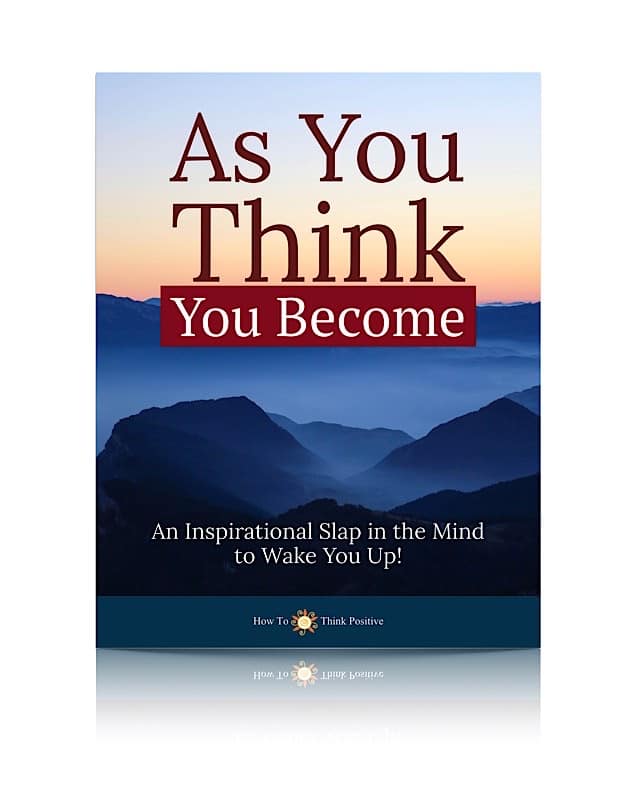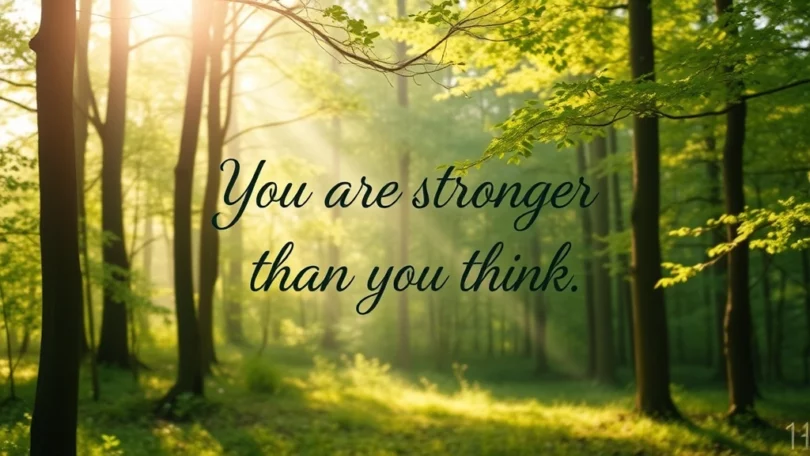Worrying about the past is a common phenomenon that can prevent us from living in the present and embracing the future. But it’s time to break free from the shackles of yesterday and start living the life you deserve.
This post contains Amazon affiliate links, meaning I may earn a small commission if you purchase through my links, at no extra cost to you. Note: We aim to provide accurate product links, but some may occasionally expire or become unavailable. If this happens, please search directly on Amazon for the product or a suitable alternative.
We’ve all been there, stuck in the quicksand of our own memories, replaying the same tired tape of past regrets and what-ifs until it’s exhausting. I know I have. For years, I let the ghosts of my past dictate my present, worrying about what could’ve been, should’ve been, or might’ve been if only I’d done things differently. But here’s the brutal truth: the past is a sunk cost, folks. It’s gone, and no amount of rumination or regret is going to change that.
Yet, we persist in torturing ourselves with the ‘if onlys’ and ‘aybes’, as if somehow, magically, the universe will rewind and give us a do-over. Newsflash: it won’t. So, here’s the question: are you ready to break free from the cycle of worry and start living in the only moment that truly matters – the present?
Because I sure as heck was. And if you’re willing to confront the uncomfortable truth about your own past-obsession, then let’s dive into the dirty work of letting go, together. It’s time to stop worrying about what’s behind you and start forging a path forward, one that’s authentic, imperfect, and yours alone.
So, take a deep breath, and let’s get started on this journey of liberation from the weight of our collective yesterdays.
Part 1: The Weight of Yesterday
Many of us carry the heavy burden of yesterday, letting it shape our today and dictate our tomorrow. But it doesn’t have to be this way.
The weight of yesterday can be crippling, making it difficult to appreciate the beauty of today. It’s like carrying around a backpack full of rocks, each rock representing a regret, a mistake, or a painful memory from the past. The more rocks we add to our backpack, the harder it becomes to stand tall and move freely.
But here’s the thing: we have the power to unzip that backpack and let go of the rocks that are weighing us down. We can choose to release the grip of the past and lighten our load, allowing us to walk with ease and grace into the present moment.
Letting go of the past doesn’t mean erasing our memories or pretending that our experiences didn’t happen. It means accepting what has been, learning from it, and then releasing it with compassion and forgiveness. It’s about making peace with our past so that we can fully embrace the here and now.
Imagine for a moment what it would feel like to walk through life without the heavy burden of yesterday on your shoulders. Picture yourself standing tall, with a lightness in your step and a sparkle in your eye. This is the freedom that comes from letting go of the past and embracing the present.
In the words that follow, we will explore practical ways to release the weight of yesterday and step into the fullness of today. We will uncover the power of forgiveness, the beauty of mindfulness, and the joy of living in the moment. So, are you ready to lighten your load and start living now? Let’s begin this transformative journey together.
Part 2: Embracing the Present
As we continue our journey of letting go of the past and embracing the present, we come to a pivotal moment of realization – the power of living in the now. The present moment is where life truly unfolds, where opportunities arise, and where we can find peace and contentment. It is here, in the present, that we can let go of the burdens of yesterday and free ourselves to fully experience the beauty of today.
Embracing the present requires a conscious effort to shift our focus from what once was to what is happening right now. It involves letting go of regret, guilt, and resentment that may be holding us back from fully engaging in the present moment. By releasing the grip of the past, we create space for new experiences, growth, and joy to enter our lives.
One of the most powerful ways to embrace the present is through mindfulness. Mindfulness is the practice of being fully present and aware of our thoughts, feelings, and surroundings without judgment. By tuning into the present moment with mindfulness, we can let go of worries about the past and anxieties about the future, allowing ourselves to fully experience the richness of now.
Another essential aspect of embracing the present is gratitude. When we express gratitude for the blessings in our lives, no matter how small they may seem, we shift our focus from what we lack to what we have. Gratitude opens our hearts to the abundance and beauty that surround us each day, helping us to appreciate the present moment and all it has to offer.
Living in the present also requires us to let go of the need for control and certainty. The reality is that life is unpredictable, and trying to hold on to a sense of control can prevent us from fully living in the moment. By surrendering to the flow of life and accepting things as they come, we open ourselves up to new possibilities and experiences that we may have never imagined.
Embracing the present is not always easy, especially if we have been accustomed to dwelling on the past or worrying about the future. It requires a commitment to practice mindfulness, cultivate gratitude, and let go of the need for control. But the rewards of living fully in the present – peace, joy, and fulfillment – are well worth the effort.
As we continue on our journey of letting go of the past and embracing the present, remember that each moment is an opportunity to start anew, to savor the beauty of now, and to live life to the fullest. Embrace the present with an open heart and a willingness to let go, and you will discover the transformative power of living now.
Part 3: The Power of Mindfulness
As we continue our journey to embrace the present and let go of the past, we come to a powerful tool that can help us in this process – mindfulness. The practice of mindfulness is about being fully present in the moment, acknowledging and accepting our feelings and thoughts without judgment.
Mindfulness allows us to tap into our inner peace and experience the world with clarity and calmness. By developing mindfulness, we can cultivate a deep sense of awareness that helps us break free from the chains of the past and embrace the beauty of the now.
Imagine waking up each morning and instead of being consumed by worries about yesterday or anxieties about tomorrow, you are fully immersed in the present moment. You are aware of the sensations of your body, the sounds around you, and the thoughts passing through your mind. This is the power of mindfulness.
One way to incorporate mindfulness into your daily life is through meditation. Taking a few minutes each day to sit quietly, focusing on your breath and observing your thoughts without attaching to them can have a profound impact on your well-being. Through consistent practice, you will develop a sense of inner peace and clarity that will help you navigate through life’s ups and downs with grace.
Mindfulness also involves bringing awareness to our daily activities. Whether you are eating a meal, taking a walk, or having a conversation, try to be fully present in the moment. Notice the textures, tastes, and sounds around you. Engage all your senses and let go of distractions. By doing so, you will deepen your connection to the present moment and cultivate a sense of gratitude for the beauty that surrounds you.
One of the most powerful aspects of mindfulness is its ability to help us let go of negative emotions and patterns that are rooted in the past. When we are fully present, we can observe our thoughts and feelings without getting entangled in them. We can acknowledge our past experiences and gently release them, making space for new beginnings and possibilities.
Incorporating mindfulness into your daily life is a journey, and like any practice, it takes time and dedication. Start small, perhaps with just a few minutes of meditation each day, and gradually expand your practice. Notice how mindfulness transforms your relationship with yourself and the world around you. Embrace the power of mindfulness and watch as it helps you let go of the past and embrace the richness of the present moment.
Part 4: Cultivating Gratitude
As we continue our journey of letting go of the past, embracing the present, and harnessing the power of mindfulness, we come to a pivotal practice that can transform our lives – cultivating gratitude.
Gratitude is like a beacon of light that illuminates the darkest corners of our minds. It shifts our focus from what we lack to all that we have. When we cultivate gratitude, we open ourselves up to a world of abundance and positivity.
One simple yet powerful way to cultivate gratitude is by keeping a gratitude journal. Each day, take a few moments to write down three things you are grateful for. They can be as simple as the warmth of the sun on your skin, the laughter of a loved one, or the comfort of a warm cup of tea. By acknowledging and appreciating these small moments of joy, you train your mind to focus on the positive aspects of your life.
Practicing gratitude not only changes the way you perceive the world but also has profound effects on your well-being. Research has shown that grateful people experience lower levels of stress and depression, have stronger immune systems, and exhibit greater resilience in the face of challenges.
Another way to cultivate gratitude is by expressing it to others. Take the time to thank the people in your life who have supported you, encouraged you, and made a difference. Whether it’s a heartfelt note, a small gesture of kindness, or simply saying “thank you,” expressing gratitude not only strengthens your relationships but also uplifts the spirits of those around you.
Incorporating gratitude into your daily life is a practice that requires commitment and consistency. Start by setting aside a few minutes each day to reflect on the things you are grateful for. Over time, you will find that gratitude becomes a natural part of your mindset, enriching your life and deepening your connection to the present moment.
As we cultivate gratitude, we let go of the need to dwell on the past or worry about the future. We learn to appreciate the beauty and abundance that surrounds us in the here and now. So, let us embrace the practice of gratitude with open hearts and open minds, allowing it to guide us on our journey towards living fully in the present moment.
In the next chapter, we will explore the transformative power of self-compassion and how it can further enhance our ability to let go of the past and embrace the present moment.
Part 5: Creating Your Future
As we stand on the precipice of our present, gazing out towards the vast horizon of our futures, it’s essential to remember that the future is not a far-off destination but a path we pave with each step we take today.
Creating your future is an art form that requires a delicate balance of vision and action. It’s about setting intentions, making choices, and actively participating in the shaping of your destiny. Just as we learned to let go of the weight of yesterday, embracing the present with mindfulness and gratitude, now is the time to turn our attention to the possibilities that lie ahead.
To start crafting your future, it’s crucial to first define what you truly desire. Take the time to envision the life you want to live, the person you aspire to become, and the impact you wish to have on the world around you. Allow yourself to dream without limitations, as the seeds of your future are planted in the fertile soil of your imagination.
Once you have a clear vision in mind, it’s time to break it down into actionable steps. Set measurable goals that will propel you forward towards your desired future. Remember, every big achievement is a culmination of small, consistent actions taken daily. Whether it’s committing to learning a new skill, fostering healthier relationships, or pursuing your passions with unwavering dedication, each choice you make today shapes the landscape of your tomorrow.
Fear not the unknown path that unfolds before you, for it is in facing uncertainty that we discover our true strength and resilience. Embrace challenges as opportunities for growth, setbacks as lessons in perseverance, and failures as stepping stones towards success. Your future is not predetermined but sculpted by the choices you make and the actions you take each day.
As you embark on this journey of creating your future, remember to stay true to yourself. Listen to the whispers of your heart, follow the guidance of your intuition, and trust in the wisdom of your inner voice. Surround yourself with people who uplift and inspire you, seek out mentors who can guide you along the way, and never lose sight of the unique gifts and talents that you bring to the world.
In the tapestry of life, each thread represents a moment, a choice, a possibility waiting to be woven into the fabric of your existence. Your future is a canvas awaiting your creative touch, a story waiting to unfold. With courage in your heart and conviction in your soul, step boldly into the unknown and begin the timeless journey of creating your future.
Overcoming Worry
For whatever reason, we tend to have ups and downs, and worry plays an important part in it. Worry is a thief of time and energy. It saps our strength and keeps us from enjoying life. In this day and age, more people than ever are plagued with constant worry.
They spend more hours worrying than doing anything constructive. When they are not worrying, they are thinking about worrying. They are always on the “edge” of panic.
Worry is like a rocking chair: It gives you something to do, but it doesn’t get you anywhere. The only difference is, when you are rocking in a rocking chair, you are eventually going to be rocked off of it… into oblivion!
You are the only one who can change the future but you need to stop worrying about the past. When you keep worrying about the mistakes you have made in the past, for example, you are stopping yourself from moving forward.
The past has no bearing on the future, so worry about making the right choice in the future instead of worrying about the wrong choice you made in the past. If you are worried about the future, worry about what you can do to make it better. If you are worried about the past, worry about how you can learn from your mistakes.
Here are 9 tips to help you overcome worry:
1. Don’t let negative thoughts take over your mind
That negative thinking is what causes you to worry. Every time you allow yourself to think about something that has a negative outcome, you are mentally preparing for that outcome. If someone had a heart attack right in front of you while you had a negative thought, you would be so upset. You would probably start worrying about your own health.
2. Give yourself permission to have positive thoughts
Worry is the opposite of faith. You cannot worry if you give yourself permission to have positive thoughts. It is impossible! If it’s not impossible, then don’t make it possible by giving yourself the wrong kinds of thoughts! Give yourself the kind that produces positive results!
3. Don’t try to figure everything out! Trying to figure things out is a form of worrying. Most people spend 95% of their time and energy worrying about something they cannot change… and… only 5% of their time and energy on what they can actually change.
4. Let go of the need for control
There is almost no one in the world who does not have a “need for control.” The need to be in control is like an addiction. You become addicted to the feeling of being in control. It produces a chemical high in your brain. However, the truth is, you never really are in complete control of anything. Even if you think you are, you are not.
5. Do one thing at a time
It is impossible to think about more than one thing at a time. If you try to think about two things, soon you will find yourself thinking about three things, then four, and soon you will be lost in a sea of “busy-ness.” Get rid of the idea that you can do more than one thing at a time. You can’t! Focus on one thing until you have completed that one thing… and then… move on to the next thing.
6. Set goals and work toward them
This will take away the need to worry about the future. Goals give your life direction and purpose. When you have a goal, you set out on a defined path that leads to a specific destination. Worrying about what lies beyond the end of your current goal is defeating itself. You will stay stuck in the same place… no matter how hard you try to get going!
7. Concentrate on the present moment
It is easy to get lost in the past or the future, but it is difficult to stay focused on the present moment. The present moment is where all the action is. Most people are so consumed with the past or the future. They are living in “slow motion.” They are like a person who has had too much alcohol. Everything is blurred, and it takes a lot of effort to get back to “normal” speed.
8. Smile
Smiling releases positive endorphins that make you feel happy and reduce stress. If you find yourself in a situation where you have to worry, the first thing you should do is… smile!
9. Accept things as they are
There is no use fighting the inevitable. When things happen, whether good or bad, you cannot control them. The only thing you can control is your reaction to those events. Therefore, the first thing you should do in any kind of difficulty is… Calm Yourself Down! It’s from a calm state of being that you can usually make the best decisions and how you direct yourself going forward.
Life is a journey, and we can’t go back and change the past. The past is just that, the past. The only thing we can do is learn from our mistakes and keep moving forward. We hope this post has helped give you some ideas on how to stop worrying about the past and start living!
Learn more:
Discover The Hidden Power of Your Thoughts. FREE Guide:
Receive self-improvement updates, start with this free guide today:
YES! I Want a Copy» Stop Your Mind From Too Much Worrying and Thinking








